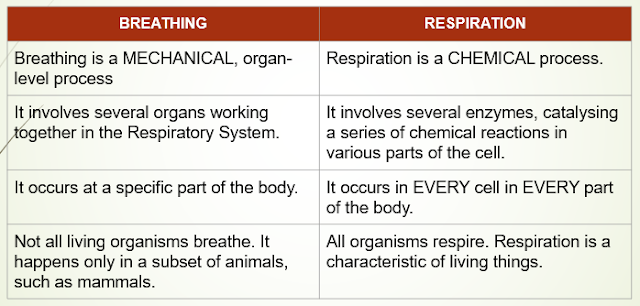THE CHARACTERISTICS OF LIFE [CSEC HSB]
SYLLABUS REFERENCE
[A1] describe the characteristics of living organisms;
BIOLOGY IS A SCIENCE
SCIENCE:
SYSTEMATIC KNOWLEDGE OF THE PHYSICAL OR MATERIAL WORLD, GAINED THROUGH EXPERIMENTATION AND/OR OBSERVATION.
Since Biology is a branch of Science, it can be defined as follows:
Biology is systematic knowledge of living organisms and the living world, gained through experimentation and observation.
Or a shorter version:
Biology is the study of living things (organisms).
HOW CAN ONE TELL IF SOMETHING IS LIVING OR NOT?
Before one can study living things, one must determine whether something is living or not.
Though it is still a topic of much debate, the following is essentially the rule.
If something demonstrates ALL of the following SEVEN characteristics, it is considered a living organism.
These characteristics can be remembered using the following acronym:
GROWTH
- Reproduction produces juvenile forms of an organism. These forms then need to grow and mature to reproduce in turn.
- Growth also includes the repair or replacement of worn-out parts of the body, using new cells.
- Increase in size can involve increase in cell number and/or size of cell.
- Various organisms can show different growth cycles. For example, most plants grow throughout their lives, whereas animals stop growing past a certain size.
RESPIRATION
 |
Definition
- Respiration is NOT breathing. Not all organisms breathe.
- Respiration is a sequence of chemical reactions that occur in an organism's cells.
- It can occur in the presence (aerobic) and/or absence (anaerobic) of oxygen. Respiration in the presence of oxygen is preferred since it releases maximum energy.
IRRITABILITY (SENSITIVITY)
Definition
- Responding to environmental stimuli helps the organism carry out life processes such as obtaining food. It also increases an organism's chance for survival, as it helps it to avoid danger in the form of predators or unsafe physical conditions.
- Responding to internal stimuli, such as change in body temperature, is an essential part of homeostasis. Homeostasis is the maintenance of stable internal conditions, which is essential to survival.
MOVEMENT
Definition
- Movement helps plants & animals to obtain nutrients.
- Movement helps animals to avoid danger, find mates and shelter.
NUTRITION
Definition
- Nutrients can be simple compounds or elements (minerals such as iron), as well as complex compounds such as proteins.
- Plants synthesize simple sugars using light energy. These simple sugars are converted to complex carbohydrates such as starch, plus lipids. With the addition of minerals from the soil, plants can also convert these simple sugars to more complex chemicals such as proteins. Plants are thus referred to as autotrophs ('self-feeding') since they essentially manufacture their food.
- Animals cannot self-feed like the plants. They obtain needed nutrients by eating plants, other animals and/or their products such as fruits. They are therefore called heterotrophs.
EXCRETION
Definition
- Metabolism: all the chemical reactions occurring in the body's cells.
- Metabolic waste: all the (potentially harmful) by-products produced by body cells.
REPRODUCTION
Definition
- It ensures that the species continues beyond the life span of one individual.
- It allows species to occupy a new habitat, via increase in its numbers.
- It replaces individuals lost to old age, predation, and disease. (Predation: the killing by one living organism of another for food).









